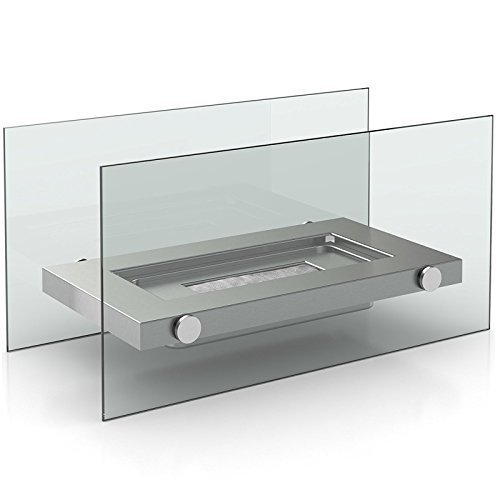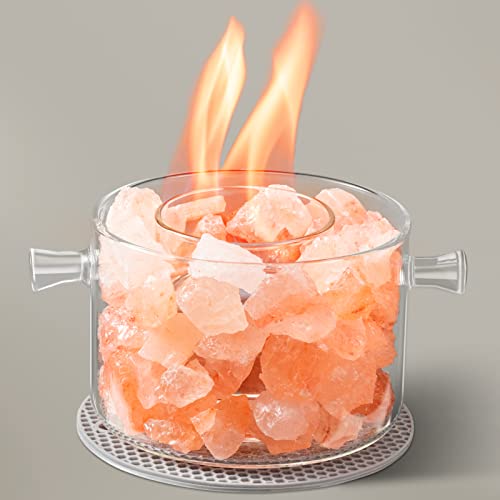Are Biofuel Fire The Most Effective Thing That Ever Was?
페이지 정보
작성자 Rodrigo 작성일24-10-18 15:50 조회3회 댓글0건본문
 Ethanol Fireplaces
Ethanol FireplacesEthanol fireplaces, also known as bio fuel fires are a great alternative to traditional wood or gas-based fireplaces. They generate real flames and heat, without the need for flues or chimneys.
These ethanol fireplaces are smokeless and odourless. They can be controlled by simply pouring fuel into the burner and then lighting it. Most indoor fire designs include an adjustable slider that can be adjusted to control the amount of fuel that is burned and the intensity of the flames.
Eco-friendly
Bio fuel fireplaces are the eco-friendly alternative to gas fires and traditional log burning stoves. They make use of a liquid fuel derived from plant extracts and emit no smoke or ash. They do not require a chimney, and can be installed even in homes without one. They are easy to clean and don't require messy sweeps. This makes them perfect for those suffering from respiratory issues.
Bioethanol fires are more sought-after than ever. They've been around for a while and have become more common. The market has grown so much that there are now different designs of bio fuel fireplace-ethanol fireplaces that can be found to fit any budget or style. This has prompted people from all walks of life to select the fireplaces.
Ethanol fireplaces function by burning bioethanol fuel inside the burner box. This liquid is clear and is derived from many different plants and crops. It is often called eco-friendly fuel, because it is renewable and sustainable, and doesn't pollute. It is carbon-neutral, meaning that the CO2 released by burning is balanced by the CO2 absorbed by the plant during its growth cycle.
These are only some of the reasons they're greener than other types of fireplaces, including wood-burning and gas-burning fireplaces. They also have an odourless and smokeless flame, which is ideal for people suffering from allergies or respiratory problems.
A bioethanol fireplace does not require a chimney for venting exhaust gases. It can be installed in any room. It can be installed in summerhouses, conservatories, and sheds. They are therefore one of the most flexible options for heating both commercial and residential properties.
As long as they are used in a safe manner If they are used correctly, ethanol fires are safe to use. Keep them away from fire-prone items and furniture. They shouldn't be used to heat an area larger than their burner. Also, it is important to ensure that the burner is fully cooled prior to refilling. If there isn't, a build-up explosive tar could trigger the fire.
Safe for indoor use
Biofuel fires are suitable for indoor ethanol fireplace use since they do not emit smoke or ash, and instead burn ethanol fuel. These fires do not require vents or chimneys. They are an excellent choice for small spaces. They may emit a mild smell during ignition and refueling but this quickly dissipates. However, it is important to follow the instructions of the manufacturer and safety guidelines when using a bioethanol fire place-based fire.
In addition to being safer indoor use, bioethanol fires are also environmentally friendly and easy to install. They emit no greenhouse gases that harm the environment and can be used to replace wood-burning or gas fires. They're also adaptable and can be moved around your home depending on your requirements.
The main advantage of bioethanol is that it creates flames that do not emit toxic fumes. Bioethanol is a renewable fuel and can be produced from various raw materials including animal fat, food waste, and plant matter. Ethanol can also be derived from corn and wheat. It is also a biodegradable, non-toxic, and non-synthetic fuel. It can be burned in any open fireplace that is standard and can also be built into an outdoor table for fireplaces or as a garden feature.
A bioethanol fireplace can add warmth and character to your home. It can also be used as a focal piece to create a stylish and modern living space. They can be placed in the middle of your living room to create a warm and inviting atmosphere, or you can even place them outdoors on your patio to provide an attractive focal point for your garden.
Another advantage of bioethanol is that it doesn't produce any carcinogenic ash or harmful substances, making it safe for families with children. It is crucial to exercise caution when using these types of fires as they can be a risk to young children. Make sure that your child is not touching the fire while it's on, and always keep an eye on them when they are near any heater or fire.
To ensure the safety of our customers To ensure the highest level of safety, our bioethanol fires are produced in compliance with strict regulations. We also suggest that you only use the correct fuel. Other types of fuel may damage your burner, causing the flame to cease to burn or cause a fire risk.
Safe for outdoor use
 Biofuel fires make a stunning addition to any outdoor living space. They generate a real flame and can be used in a variety of locations, including Conservatories and sheds, summer houses and workshops. They do not require a gas connection, chimney, or electricity. They are powered by bioethanol fuel which is eco-friendly. This makes them an ideal alternative to a traditional gas fireplace or log burner. They are also more efficient in energy use than other types of fire.
Biofuel fires make a stunning addition to any outdoor living space. They generate a real flame and can be used in a variety of locations, including Conservatories and sheds, summer houses and workshops. They do not require a gas connection, chimney, or electricity. They are powered by bioethanol fuel which is eco-friendly. This makes them an ideal alternative to a traditional gas fireplace or log burner. They are also more efficient in energy use than other types of fire.Bioethanol fireplaces are equipped with a number of safety measures to protect their users and property. They include the remote control that shuts off the fire and an automatic suffocation detector. The fuel container is also sealed and kept away from the flame to avoid accidents. These security features make biofires more secure than other types of fire.
Ethanol fireplaces are non-toxic and do not emit smoke or ash. This makes them an excellent choice for those with allergies or respiratory problems. They also consume less energy than gas fireplaces, and they don't produce any harmful gases like carbon monoxide. However, bioethanol fireplaces require ventilation to prevent carbon monoxide buildup in the air.
When you use a bioethanol fire make sure you adhere to all safety guidelines applicable to the specific fireplace you have. It is also essential to carefully select the kind of fuel. While the use of gel fuel was popular for the operation of these fireplaces, it is now obsolete and a much safer alternative is liquid bioethanol.
Although these fireplaces are safe, they are flammable and can cause injuries if not used properly. To avoid injury, do not refill a bioethanol flame while it is lit or hot, and always keep the fuel out of reach of children and pets. It is essential to be aware that the flames of a bioethanol fireplace can cause spit or sparks, so it is recommended to remove the room for a few minutes prior to refilling.
It is recommended to keep a bioethanol fireplace away from any surfaces that are flammable, like wallpaper, curtains or carpets. The fireplace should be situated in a room with solid or semisolid flooring. It should also be separated from televisions by a noncombustible mantle of the class 0A1 fireproof board.
Cost-effective
Bio fires combust the fuel ethanol to create a gorgeous dancing flame that is captivating to observe. They don't create any environmental pollutants such as smoke, soot or ash, and don't require a chimney or a flue. The cost of running a bio-ethanol fire is much lower than that of traditional fireplaces made of logs or gas ones. They can also be used indoors as well as outdoors.
Installing bioethanol fires is simple and they comply with building codes. You don't need to make any major structural changes and you don’t require permission for planning. However, you will need to ensure that the fireplace does not contain any combustible substances like ceramic wool, burner blocks or sponge. Additionally, you should not add anything to the flames when they are burning or refill the fuel when they are still hot.
If you're concerned about the cost of bioethanol, you might think about purchasing premium fuel. This will help reduce your operating costs and extend the life of your fireplace. Lower-cost fuels can lower your operating expenses in the short term, but they also be more expensive to burn than higher-end fuels. Therefore, it is important to purchase a good-quality fuel and to buy in bulk when possible to get the best value for your money.
Biofuel fires don't emit smoke or odours, and they are also low-cost to run. This makes them safer to use indoors than a traditional log burner and they don't release any harmful air particulates which is beneficial if you have allergies or other health concerns. Bioethanol fires are not smokey and odourless, so they can be used in the workplace without disturbing customers or employees.
The fact that bioethanol fires do NOT require a chimney or flue means that maintenance costs are lower for businesses. Bioethanol fires do not require as much cleaning to remove soot and ash from the combustion chamber. A regular maintenance schedule for a year is usually enough to keep a bio ethanol fire in good condition, saving you time and money in the long run.
댓글목록
등록된 댓글이 없습니다.




